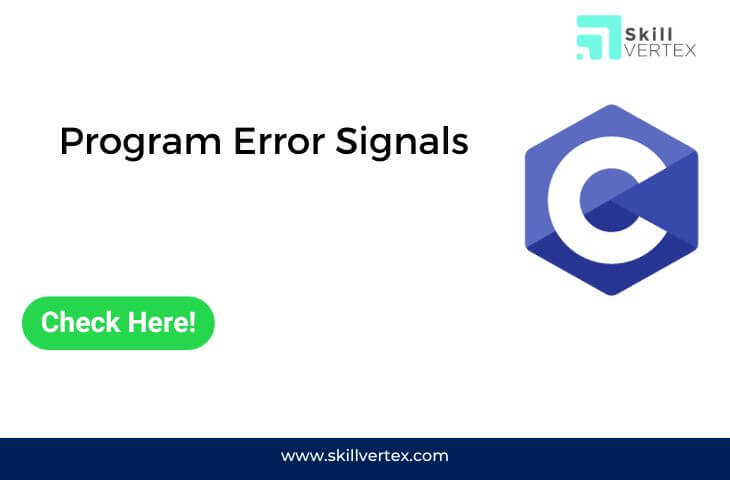Table of Contents
Program Error Signals
Signals in computers enable communication between processes and the operating system. They’re triggered when a program encounters a critical error, signaling the OS to notify the process. Some processes have signal handlers for essential tasks before leaving the CPU. While signals and interrupts share similarities, interrupts are processor-generated and kernel-handled, whereas signals are kernel-generated and process-handled. Error signals often result in program termination, creating a “core” file for debugging, revealing the process state at termination.
Error Signals
- SIGFPE: Indicates an arithmetic error such as division by zero or a floating-point error. Storing integer data in a location used for a floating-point operation triggers an “invalid operation” exception.
- SIGILL: Denotes an illegal instruction, generated when executing a garbage instruction or one that a program lacks privileges to execute. In C, encountering this signal is unlikely unless the object file is corrupted. It’s also generated in the event of a stack overflow.
- SIGSEGV (Segmentation Violation): Occurs when a process attempts to access a memory location not allocated to it, often caused by de-referencing a wild pointer. It’s triggered when a program exceeds its memory space, detected by the memory protection mechanism.
- SIGBUS (Bus Error): Named for “Bus error,” this signal is generated when invalid memory is accessed. Unlike SIGSEGV, where the memory location exists but is invalid, SIGBUS occurs when de-referencing a memory location outside the allocated memory space.
- SIGABRT – If an error itself is detected by the program then this signal will generated using call to abort(). This signal is even used by the standard library to report an internal error. assert() function in c++ also uses abort() to generate this signal.
// Example of 'SIGABRT' error
#include <iostream>
using namespace std;
int main() {
int arr[5] = {1, 2, 3, 4, 5};
// SIGABRT error
arr[6] = 6;
return 0;
}Output
// Example of 'SIGABRT' error
#include <iostream>
using namespace std;
int main() {
int arr[5] = {1, 2, 3, 4, 5};
// SIGABRT error
arr[6] = 6;
return 0;
}Output
Abort signal from abort(3) (SIGABRT)
- SIGSYS –
This signal will be sent to a process when there is an invalid argument is passed to a system call.
- SIGTRAP –
This signal will be sent to process when an exception has occurred. This will be requested by the debugger to get informed. For example, if a variable changes its value then this will trigger it.
FAQ- Program Error Signals
Q1. What is error signals?
Ans. The error signal is referred as the difference between the input variable and the feedback variable,(5.1)e(t)=xi(t)−xf(t)(5.2)E(s)=Xi(s)−Xf(s)
Q2. What is the SIGFPE signal in C?
Ans.The SIGFPE signal will reports a fatal arithmetic error. Eventhough the name is derived from “floating-point exception”, this signal will cover all arithmetic errors, including division by zero and overflow.
Q3.What are the various types of error in signal?
Ans. At the time of transmission, errors were found in the binary data sent from the sender to the receiver due to the noise during transmission. Those various types of error are Single-bit error, multiple-bit error, and burst error are the types of error.
Hello, I’m Hridhya Manoj. I’m passionate about technology and its ever-evolving landscape. With a deep love for writing and a curious mind, I enjoy translating complex concepts into understandable, engaging content. Let’s explore the world of tech together

